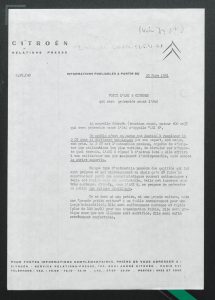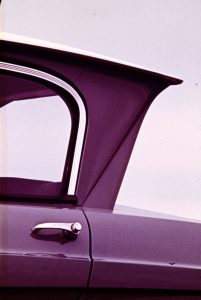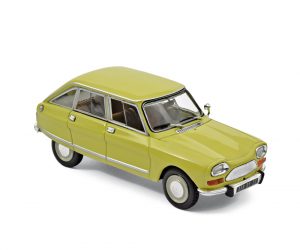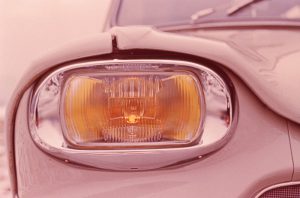MOBILITY/CLASSIC:
– 24 April 1961: Press presentation of the Ami 6 saloon car.
– Best-seller: More than one million vehicles produced, including 550,000 Ami 6 Break
– Middle class: Ami 6 closed gap between 2CV and DS
– Unique design: Rear window sloping backwards and roof line in Z-shape
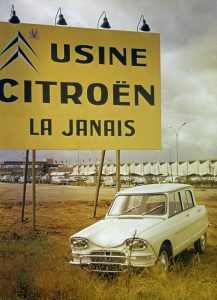
After designing the Traction Avant, the 2CV and the DS with the Citroën design team, Flaminio Bertoni was entrusted with the development of a mid-size car. The result was the Ami 6 – his masterpiece, as he himself called it. The Ami 6’s body, with its strongly accentuated lines and rearward-sloping rear window that allowed a clear view to the rear even in the rain, caused quite a stir. The model offered a large boot, optimum use of space with compact dimensions and plenty of comfort for all passengers.
The technology was derived from the 2CV – among other things, the air-cooled two-cylinder boxer engine was based on the engine of the legendary “duck”. The Ami 6 was initially offered with 21 hp (16 kW), more powerful engines followed.
In addition to the striking front, the centrally inward-curving bonnet, the Pagoda-style roof and the eye-catching lines on the sides also made for a stately appearance. Rear sliding windows and a boot lid that opened from the outside were added to the Ami 6 as early as September 1961. The newly designed rectangular headlights resulted in a 26 percent higher light output than the conventional round headlights.
It was not only the design that was innovative, but also the marketing. In advertisements of the time, the Ami 6 was presented as a “second car, ideal for the lady of the house”.
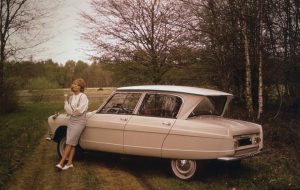
The interior of the Ami 6 was reminiscent of the DS. From the single-spoke steering wheel and the door handles to the controls and seats – everything met the highest quality standards. The suspension of the 2CV provided excellent handling. In particular, the Club versions with four headlights and white side trim, which came onto the market from September 1967, are still very popular with fans of the model.
Ami 6 Break: Bestseller with five doors
At the end of 1964, the estate version Break with 320 kg payload celebrated its premiere. It was designed by Henri Dargent, Flaminio Bertoni’s assistant, and Robert Opron, successor to Bertoni, who died in 1964. The Break not only managed to boost sales significantly, but even overtook the saloon – a very rare event in automotive history. The Break accounted for more than half of the over one million Ami 6s produced.
The design was more consensus-oriented and also offered considerable volume for a leisure vehicle in this category. In addition, the Ami 6 Break was versatile and very comfortable – ideal prerequisites for families, as well as for professional use, for example in the crafts sector. In 1966, the Ami 6 became the best-selling vehicle in France.
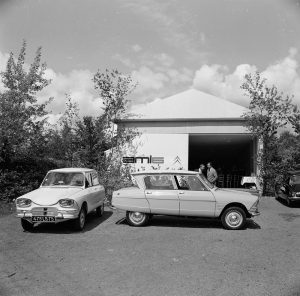
Production of the saloon ended in March 1969, six months before the end of production of the Ami 6 Break. Its successor was the more conventional Ami 8, with the rear window facing in the “right” direction. It was replaced by the Visa in 1978.
Interesting facts about the Citroën Ami 6
The model name Ami 6 is a combination of the internal designation “AM” and “amici” (Italian for friends) – inspired by its designer, who was Italian himself. In addition, the French “Ami six” was deliberately chosen as a pun on the English “a Missis”, as this model was intended to attract more women as customers.
On 19 December 1966, Citroën organised “Le Tour de Gaule d’Amisix”. At the start in Rennes-La-Janais, three Ami 6 Break went to prove their endurance and road qualities. Accompanied by an escort, they reached the finish line after 23 hours and 11 minutes; the team had covered a total of 2,077 kilometres with an average speed of 89.6 km/h.
In June 1963, the Ami 6 was introduced in the United States with four round headlights and reinforced bumpers.
Production sites: Paris from 1961 to 1963, Rennes-La-Janais from 1961 to 1969. The Ami 6 marked the opening of Citroën’s newly built plant in Brittany; it was the first major decentralisation operation by the Paris-based brand. Forest (Belgium) from 1961 to 1969. Mangualde (Spain): from 1963. Vigo (Spain): Break from 1967.
1,039,384 vehicles were produced in total: 483,986 saloons (April 1961 to March 1969), 551,880 Break (October 1964 to September 1969), 3,518 Entreprise (Break Service, two-seater, glazed and panelled versions).
Photos for this article:
https://virtualdesignmagazine.de/this-car-was-already-very-weird-and-still-became-a-bestseller/
BRAND: © Citroën Communication
virtualdesignmagazine Michael Hiller


